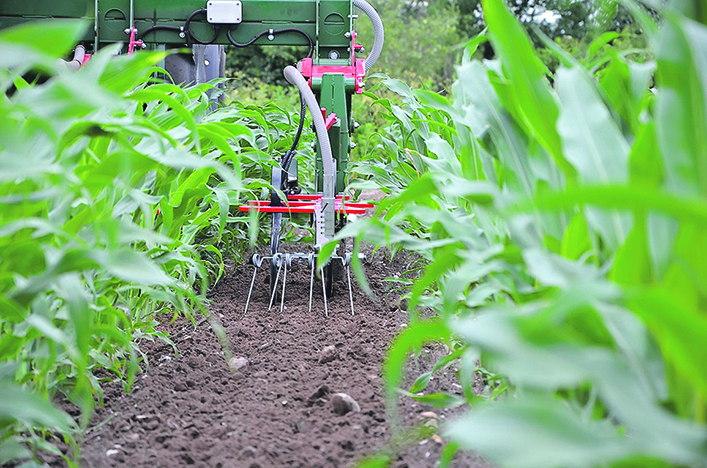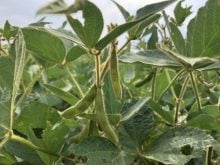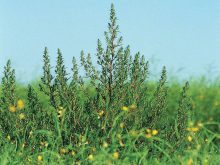The farming world is turning away from chemical weed control, and since Europe is the trend leader, it’s logical that the latest non-chem technology comes from there.
The Swedish company Väderstad is at the forefront of new seeding technology. It had a hole in its equipment lineup in the area of inter-row cultivation. So, it reached across the channel to Denmark to make a deal with Thyregod to take its lineup of TRV high tech cultivators that use two-camera guidance.
Wolfram Hastolz, Väderstad tillage director, said the company heard from farmers about a need for inter-row crop cultivators.
“And looking into the future, we see a shift to more mechanical solutions for weed control,” said Hastolz.
“The more you open the summer cultivation window, the longer you avoid chemical applications. Boom height is the factor shortening your cultivation season. TRV has a boom height that goes up to 80 centimetres. Thyregod’s tools will help reduce the use of pesticides in large parts of the world.
“There is usually a challenge to match an inter-row cultivator to a seeding machine. We can now offer a complete solution. Adding this inter-row cultivator optimizes our future Proceed concept (need seeding equipment line), which can be used in cereals.”
TRV is designed for row spacings between 12.5 cm and 90 cm working in cereals, canola, beet, corn and most other common crops. The sensitive twin camera steering lets the TRV work down to 2.5 cm from the rows at speeds of more than 10 km-h.

The TRV Swingking comprises two main booms that run independently.
The TRV frame is designed with a ground clearance of 85 cm. Entire sections can be lifted all the way up from the row to a height of 75 cm with the section lift to avoid damaging crop in the headlands. The tractor’s GPS can control automatic lifting of the sections.
Thyregod’s optical lane assistant uses vision control to ensure accurate guidance. The camera contains two colour cameras focused on the plant rows. Information the camera picks up is sent to the terminal in the tractor, where it is then converted into movements on the booms. At the same time, the terminal keeps the driver informed.


















